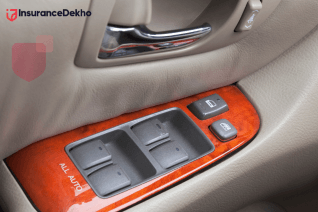Steps to Follow While Buying Car Insurance Online
This article is a guide to the most simplest and easiest way for one to buy a car online.
Table of Contents
Before the advancement of technology, buying car insurance was a task. At first, people had to contact an insurance agent, then visit the nearest motor insurance company branch and call the insurance provider for the same. This process is not only long and tiring but also requires a lot of paperwork and is very time-consuming. Traditionally, one cannot compare different insurance policies before choosing the right one and end up buying the one suggested by the agent and it also gets challenging for the buyer to check for the insurer’s credibility as well.
Whereas, today, with the advancement of technology, by just filling in a few required details, one can not only buy a car insurance online within minutes by comparing various other motor insurers plans but buyers could also claim rewards and save a lot of money through discounts and a lot more exciting offers. Lastly, policy endorsement in your car insurance is easier online as one only needs to submit a self-declaration along with proof of changed detail to the insurer and your request will be accepted rather than filling up forms and waiting in the queue. Hence, here are a few easy steps for you to follow while buying car insurance online.

Steps To Follow To Buy Car Insurance Online
Following is the simple 5 step process for you to buy car insurance online:
Step 1: Basic Requirement
Before buying car insurance, one must decide on which insurance policy is suitable for their car from either of the third party car insurance, comprehensive car insurance and standalone own-damage insurance policy.
Step 2: Comparison And Assessment Of Different Available Plans
Once you have decided on which insurance policy to choose. The next step is to compare the different available plans on the basis of your preferences. The comparison should be on the basis of policy coverage, premium, the strength of cashless garage and feature among various other factors. One can check all of the above on websites that offer comparisons between the following on the basis of such factors.
Step 3: Add-on Selection
Add-ons are described as the additional covers which amplify or increase the protection of the expected insurance policy. A few of the common add-on benefits available are: EMI cover, registration certificate cover, tyre cover, consumables cover and many more. These benefits are not available with the third party or the partial insurance coverage and are only available with the other two policies namely, the comprehensive and standalone insurance policies.
Step 4: Determination Of The Correct IDV
IDV is known as the Insured Declared Value of the car. One must check for the IDV and should make sure that it is comparable to the market value. The age of the car determines the IDV. When situations such as theft or damage beyond repair arise, the IDV is paid to the consumer and it also plays an important role in calculating the own damage premium amount.
Step 5: Make the Payment
The last and final step is to enrol your car for the policy. You need to fill in your personal details such as name, address, age occupation along with the car details such as seating capacity, RTO, model, engine number and more. Once the car is evaluated through the online process, you can register a policy for your car and finish the payment.
Conclusion
Buying a car online is a simple, hassle-free process that merely takes minutes and technological advancement has made it an easier and a transparent process. It is not only less time consuming but it also helps one to make informed decisions by comparing policies and other offers of different motor companies in one place. Advancement in technology has changed the messy paperwork, long queues and long waits into a one-step job at the comfort of one's home.
Also Read:
How Many Car Insurance Claims Can be Filed in a Year?
Tips to Maintain Safety on Roads While Driving A Car
Disclaimer: This article is issued in the general public interest and meant for general information purposes only. Readers are advised not to rely on the contents of the article as conclusive in nature and should research further or consult an expert in this regard.














































